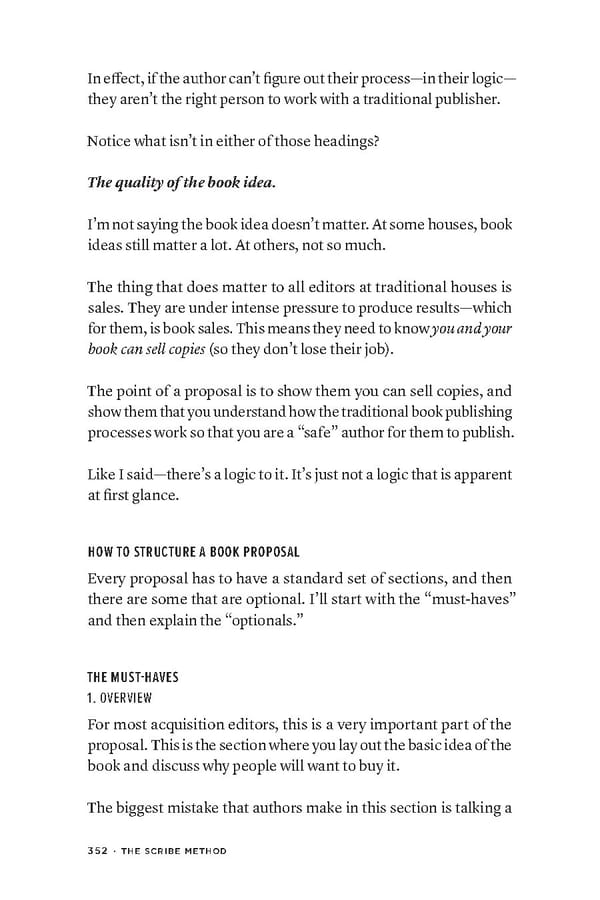In effect, if the author can’t figure out their process—in their logic— they aren’t the right person to work with a traditional publisher. Notice what isn’t in either of those headings? The quality of the book idea. I’m not saying the book idea doesn’t matter. At some houses, book ideas still matter a lot. At others, not so much. The thing that does matter to all editors at traditional houses is sales. They are under intense pressure to produce results—which for them, is book sales. This means they need to know you and your book can sell copies (so they don’t lose their job). The point of a proposal is to show them you can sell copies, and show them that you understand how the traditional book publishing processes work so that you are a “safe” author for them to publish. Like I said—there’s a logic to it. It’s just not a logic that is apparent at first glance. HOW TO STRUCTURE A BOOK PROPOSAL Every proposal has to have a standard set of sections, and then there are some that are optional. I’ll start with the “must-haves” and then explain the “optionals.” THE MUST-HAVES 1. OVERVIEW For most acquisition editors, this is a very important part of the proposal. This is the section where you lay out the basic idea of the book and discuss why people will want to buy it. The biggest mistake that authors make in this section is talking a 352 · ThE SCriBE METhOD
 The Scribe Method by Tucker Max Page 351 Page 353
The Scribe Method by Tucker Max Page 351 Page 353